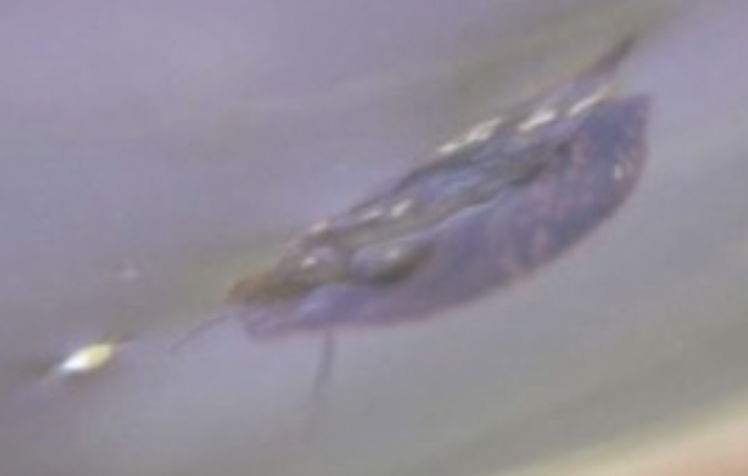
Land snails move via adhesive locomotion. Through muscular contraction and expansion of their foot, they transmit waves of shear stress through a thin layer of mucus onto a solid substrate. Since a free surface cannot support shear stress, adhesive locomotion is not a viable propulsion mechanism for water snails that travel inverted beneath the free surface. Nevertheless, the motion of the freshwater snail, Sorbeoconcha physidae, is reminiscent of that of its terrestrial counterparts, being generated by the undulation of the snail foot that is separated from the free surface by a thin layer of mucus. Here, a lubrication model is used to describe the mucus flow in the limit of small-amplitude interfacial deformations. By assuming the shape of the snail foot to be a traveling sine wave and the mucus to be Newtonian, an evolution equation for the interface shape is obtained and the resulting propulsive force on the snail is calculated. This propulsive force is found to be nonzero for moderate values of the capillary number but vanishes in the limits of high and low capillary number. Physically, this force arises because the snail’s foot deforms the free surface, thereby generating curvature pressures and lubrication flows inside the mucus layer that couple to the topography of the foot.
See paper here: Lee, Bush, Hosoi & Lauga (2008).
SELECT PRESS: Nature News
